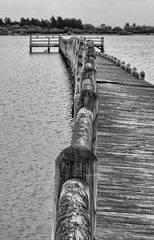
Search
Images for [empty query]; more images...
Doors and Chords: Explorations from Music to Architecture
Research papers, Victoria University of Wellington
Architecture and music have a long intertwining history.These respective creative forces many times have collaborated into monumental place, harboured rich occasion, been catalyst for cultural movement and defined generations. Together they transcend their respective identities. From dinky local church to monstrous national stadia, together they are an intense concentration, a powerfully addictive dosage where architecture is the place, music is the faith, and people are the reason. Music is a programme that architecture often celebrates in poetic and grand fashion; a superficial excuse to symbolise their creative parallels. But their relationship is much richer and holds more value than just the opportunity to attempt architectural metaphor.While music will always overshadow the architecture in the sense of a singular event, architecture is like the soundman behind the mixing desk. It’s not the star front and centre grabbing your attention, but is responsible for framing the star. It is the foundational backdrop, a critical pillar. Great architecture can help make great music. In this sense music is a communication of architecture, it is the ultimate creative function. Christchurch, New Zealand, is a city whose story changed in an instant. The seismic events of 2010 and 2011 have become the overriding subject of its historical narrative, as it will be for years to come. Disaster redefines place (the town of Napier, struck by an earthquake in 1931, exemplifies this). There is no quantifiable justification for an exploration of architecture and music within the context of Christchurch. The Town Hall, one of New Zealand’s most architecturally significant buildings, is under repair. The Christ Church Cathedral will more than likely be rebuilt to some degree of its former self. But these are echoes of the city that Christchurch was.They are saved because they are artefact. Evidence of history.This thesis makes the argument for the new, the better than before, and for the making of opportunity from disaster, by proposing a ‘new’ town hall, conceived from the sound of old.
20170321_4180_7D2-70 Still bent and broken (12/52)
Images, eqnz.chch.2010
73 months after the earthquake that damaged it, the jetty at South New Brighton Domain is still not repaired. Seven years ago it was straight and level. Dull, flat and orrible (horrible) light meant this image was destined to become monochrome!
20170509_6305_7D2-62 Remembrance (129/365)
Images, eqnz.chch.2010
Today was the first time I have been to the earthquake memorial since it was completed and opened on 22nd February 2017, six years after the devastating quake that killed the 185 that are named on this wall. I knew two of the people on the list.
20170704_9090_7D2-24 Only two left (185/365)
Images, eqnz.chch.2010
Only two of 20 houses left in the Rawhiti Earthquake Village. This from the sign on perimeter fence: "Since 2011, Rawhiti Domain has been used to provide temporary accommodation for those affected by the Canterbury earthquakes. Over 200 households have used the 20 houses while their own homes have been repaired or rebuilt. The demand for acco...
20170918_6084_7D2-41 Demolition still happening (260/365)
Images, eqnz.chch.2010
Six ½ years after the earthquakes there are still a few demolitions taking place. This one is a block of council owned flats. Whether the whole complex is being demolished or not I don't know., but here the centre block of three is being demolished. The green grass is what was sections and houses demolished in 2012-2015 as it is too close to t...
20171103_5588_1D3-70 Cabbage Tree in the Red Zone
Images, eqnz.chch.2010
An impressive Cabbage Tree (Cordyline australis) that was in someone's back yard prior to the demolition of houses post the 2011 earthquake.
20171103_5582_1D3-38 Trees in the Red Zone (307/365)
Images, eqnz.chch.2010
In what used to be sections with houses and yards. Between late 2011 and 2014 the houses (well 95% of them) were removed due to land dropping in the 2011 earthquakes and the proximity of the Avon River, tidal in this area.
20171103_5586_1D3-66 Phoenix Palm in the Red Zone
Images, eqnz.chch.2010
A Phoenis Palm (Phoenix canariensis) that was in someone's back yard prior to the demolition of houses post the 2011 earthquake.
Insuring earthquakes: How would the Californian and Japanese insurance pro…
Research papers, Victoria University of Wellington
Earthquakes are insured only with public sector involvement in high-income countries where the risk of earthquakes is perceived to be high. The proto-typical examples of this public sector involvement are the public earthquake insurance schemes in California, Japan, and New Zealand (NZ). Each of these insurance programs is structured differently, and the purpose of this paper is to examine these differences using a concrete case-study, the sequence of earthquakes that occurred in the Christchurch, New Zealand, in 2011. This event turned out to have been the most heavily insured earthquake event in history. We examine what would have been the outcome of the earthquakes had the system of insurance in NZ been different. In particular, we focus on the public earthquake insurance programs in California (the California Earthquake Authority - CEA), and in Japan (Japanese Earthquake Reinsurance - JER). Overall, the aggregate cost to the public insurer in NZ was $NZ 11.1 billion in its response to the earthquakes. If a similar-sized disaster event had occurred in Japan and California, homeowners would have received $NZ 2.5 billion and $NZ 1.4 billion from the JER and CEA, respectively. We further describe the spatial and distributive patterns of these different scenarios.



